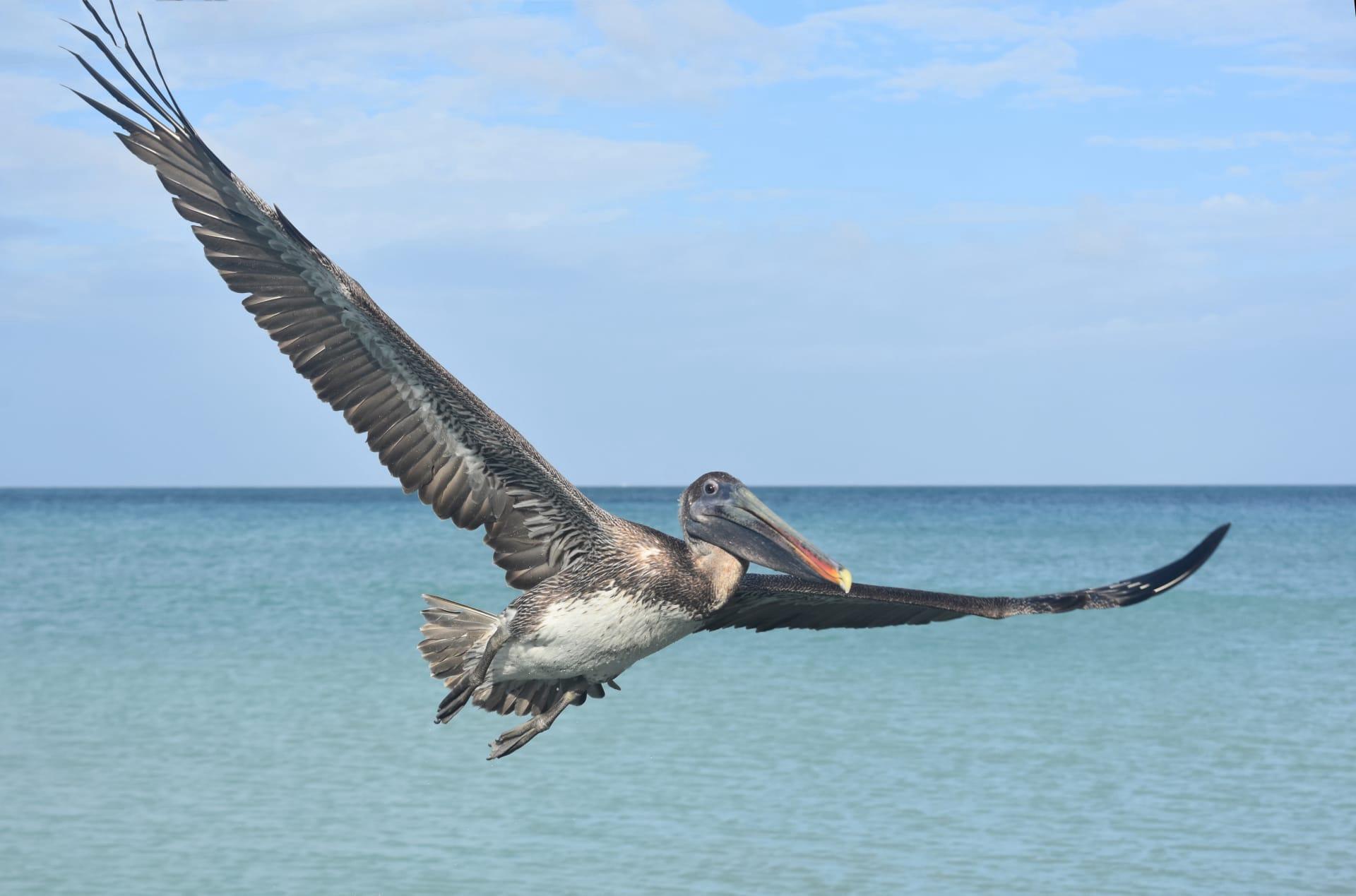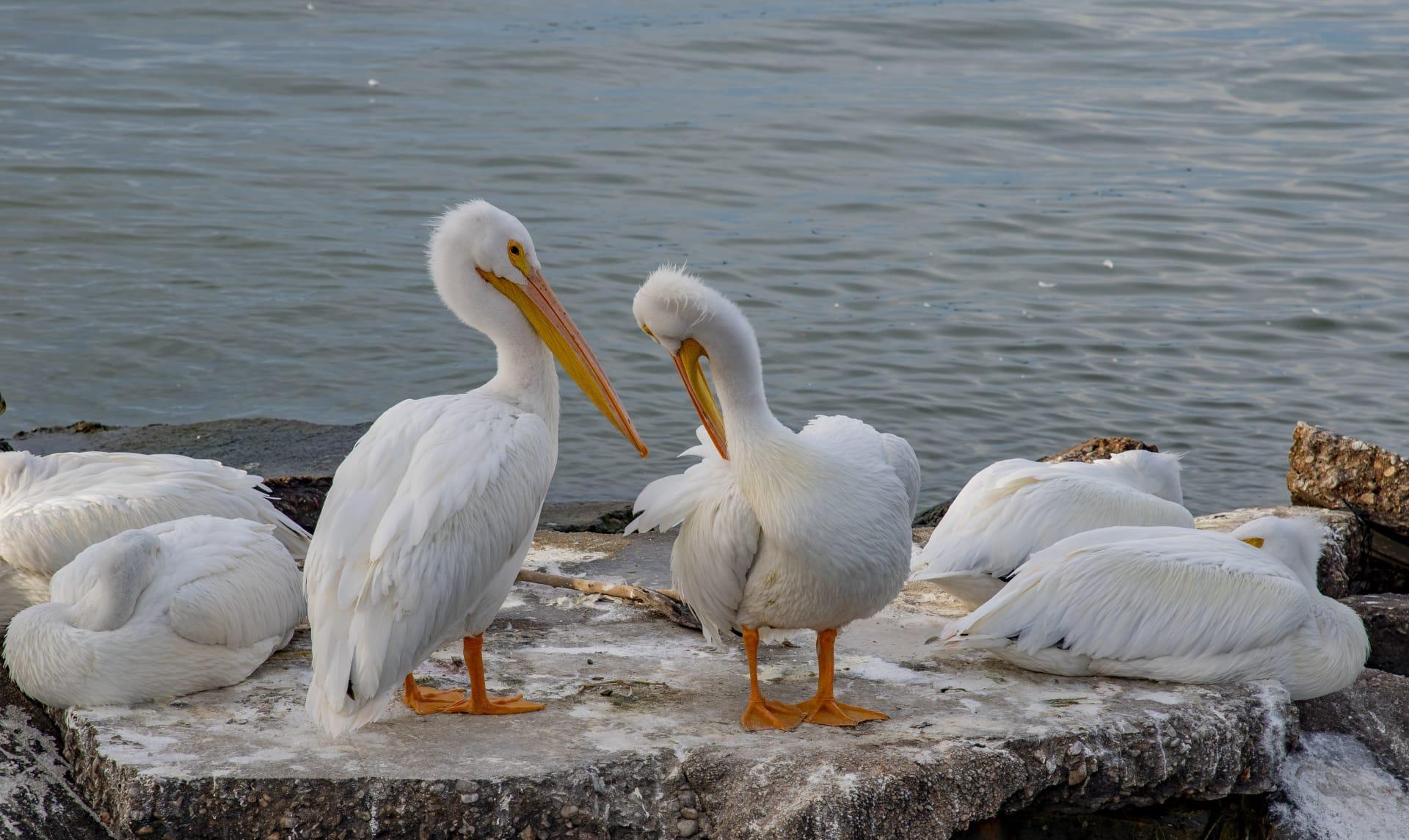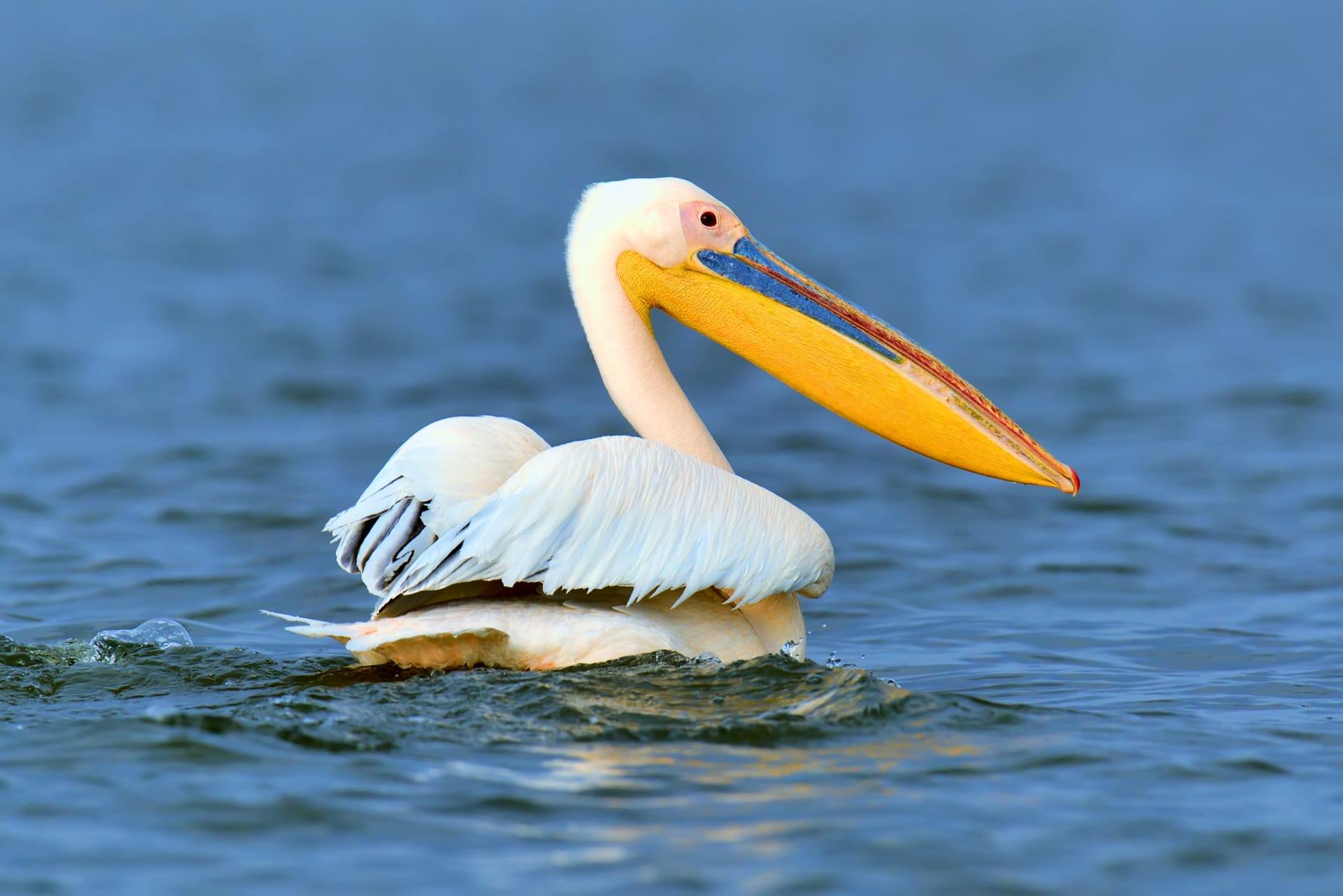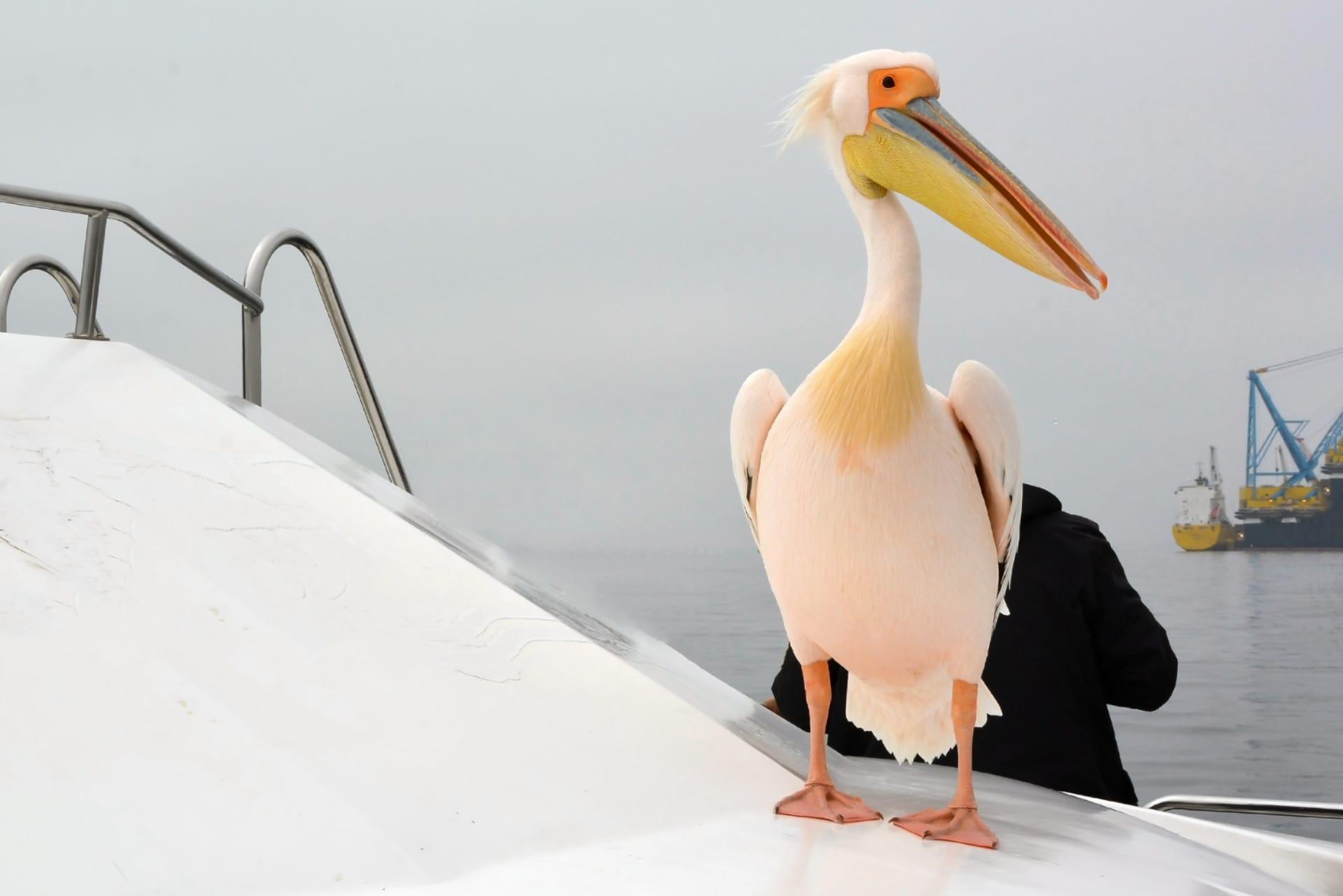1
Pelicans are renowned for their massive bills and large throat pouches, which are not just for show but serve a crucial function in their feeding strategy. An adult pelican's bill can grow up to 18 inches long, making it one of the longest among birds. This impressive beak, along with the expandable throat pouch, allows pelicans to scoop up water and fish together. They can hold up to 3 gallons of water in their pouch, which is nearly three times the volume of their stomach. After scooping up water, pelicans drain the water before swallowing their fishy feast.
Pelicans have an unusual way of sleeping — they can sleep with their beaks tucked on their backs, a habit that helps conserve heat. This posture might look uncomfortable, but it's quite practical for pelicans. The warmth from their bodies helps keep their sensitive beaks warm, protecting them from the cold. This is particularly important since their large bills have a lot of blood vessels and can lose heat quickly. This unique sleeping position also helps in balancing, as the weight of the beak is evenly distributed, making it easier for them to stay perched comfortably.

2
Pelicans are social birds, often seen in large flocks. This social behavior extends to their hunting techniques. They practice cooperative fishing, where a group of pelicans will work together to herd fish into shallow waters for easy catching. This strategy not only increases their success rate but also reflects their complex social interactions and communication skills. This cooperative behavior is a testament to their intelligence and adaptability in different environments.
The pelican's digestive system is quite specialized to handle their fish-heavy diet. They have a gular pouch (throat pouch) that not only aids in capturing fish but also acts as a cooling system. When pelicans are overheated, they will flutter the pouch to cool themselves down. This is because the pouch is rich in blood vessels, and the increased air flow helps to dissipate heat. This unique adaptation is a perfect example of how pelicans are evolved to thrive in their habitats.

3
One of the most striking features of pelicans is their ability to dive from great heights. Brown pelicans, for instance, can dive from as high as 60 feet to catch their prey. During these high-velocity dives, their bodies are perfectly adapted to reduce the impact. They retract their necks and rotate their bodies to align with the dive, minimizing water resistance and injury. This incredible diving ability showcases the pelican's precision and adaptation for hunting.
Pelicans are also known for their long lifespan in the wild. On average, a pelican can live for about 15 to 25 years. This longevity is remarkable for such large birds, and it's attributed to their adaptable diet, efficient hunting methods, and few natural predators. This extended lifespan also allows them to form long-term bonds within their communities, which is vital for their cooperative behaviors and breeding success.

4
Pelicans are not just confined to coastal areas; they are highly adaptable and can thrive in a variety of habitats. They inhabit lakes, rivers, and even inland water bodies in addition to oceanic environments. This adaptability allows them to colonize a diverse range of geographical areas. Such versatility in habitat preference demonstrates their ability to find food and nesting sites in different environments, ensuring their survival and proliferation.
During the breeding season, pelicans are known for their dramatic change in coloration. For example, the normally pale plumage of the American White Pelican turns a vibrant shade of pink or orange on the chest and around the eyes. This color change is believed to be an attraction mechanism for mating. It's a temporary transformation that fades after the breeding season, highlighting how pelicans can physically adapt to different seasons and biological needs.

5
Pelicans play an important ecological role as indicators of ocean health and fish populations. Their presence and numbers in a particular area can signify the abundance or scarcity of fish. This makes them important for ecological studies and monitoring the health of marine environments. Scientists often study pelican populations and behavior to gauge the impact of environmental changes and human activities on marine ecosystems.
Interestingly, pelicans have inspired human inventions and art. The design of the pelican's throat pouch has influenced the creation of fishing nets and certain types of water scoops. In art and culture, pelicans have been depicted in various forms, symbolizing generosity and selflessness in some cultures, due to their generous feeding habits and the myth of pelicans feeding their young with their own blood. This demonstrates how pelicans have not only adapted to their environments but also influenced human culture and innovation.